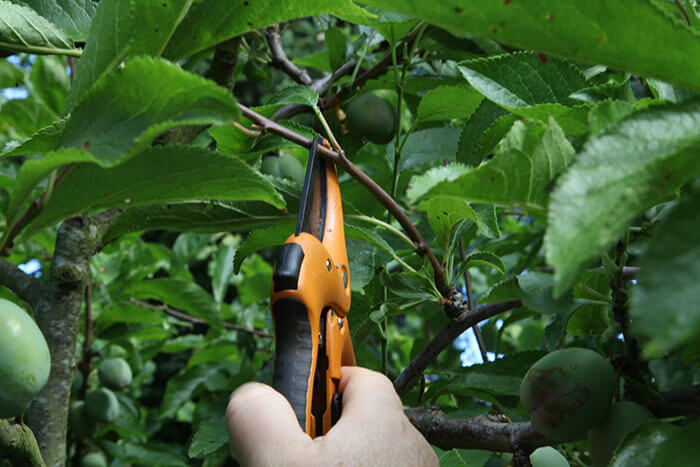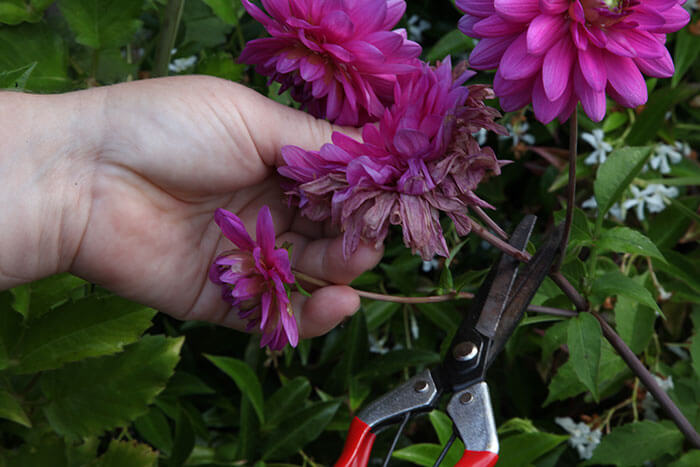Many flowers benefit from being trimmed as their bloom season progresses—withered blossoms should be removed. This promotes growth of the plant, improves appearance, and often encourages further blooming. Some of the flowers that benefit from deadheading includes Shasta daisies, Coneflowers, Lupines, Lavenders, Geums, and Phloxes.
This time of year, dahlias are one of the most popular flowers that require deadheading. Dahlias have flower buds all along their stem and, by snipping off spent blooms, the next bud down the stem is activated to bloom. If the spent flowers are left on the bush, the plant will continue to put energy into seed development.
With deadheading flowers, the biggest question is where to cut. A good rule of thumb is to go down the stem to the next lateral leaf and cut just above that. This is not a hard and fast rule, however. With roses, go down to the next leaf with five lobes (cutting above the smaller leaves with three lobes will produce a weak shoot). And with lavender, remove the long flower stalk, but also about an inch of the foliage, trimming the tips and shaping the plant. This will encourage a possible second flowering in autumn (depending on climate).
For deadheading soft stemmed (herbaceous) flowers, pruners such as these Fruit Scissors do a great job. Another option is the spring-loaded Flower Cutter, whose narrow nose is able to access the space between stems easily. For woody-stemmed flowers, these Bypass Pruners, or Professional Hand Pruners have the strength needed for tougher stems like lavender or roses.







